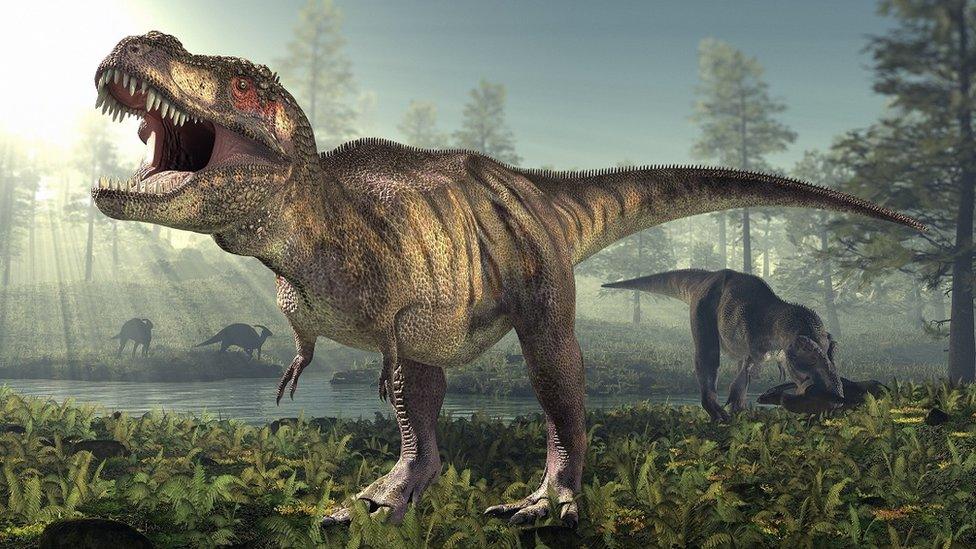T-rex's eye socket shape helped their powerful bite, new research says
- Published
- comments

The Tyrannosaurus rex was once one of Earth's most powerful predators
The Tyrannosaurus rex was once one of Earth's most powerful predators.
With their huge frames, muscular bodies and razor sharp teeth, there's no doubt the dinosaurs were a species to be feared!
Now, a new study from researchers at the University of Birmingham suggests the T.rex's eye sockets would have helped it out when it came to munching on its prey.
According to the research, changes in the shape of the dinosaur's eye socket helped strengthen its bone-crushing chomp.
The T.rex is thought to have had a bite so mighty, the force would have been equivalent to more than 3,600 kg, or around three small cars, pushing down on its prey.
So how exactly did the dinosaur's eyes assist it when chomping on food? Well, the T.rex's eye sockets evolved, becoming more oval-shaped, or elliptical, over time. This was also the case for other dinosaur predators.
The unusually shaped eye sockets meant the predators' skulls were able to better absorb the impact as they pounced on prey.
A number of large predators had unusually shaped eye sockets
Dr Stephan Lautenschlager, senior lecturer of palaeobiology at the university and author of the study, analysed the shape of the eye sockets of around 500 different dinosaurs and related species.
"The results show that only some dinosaurs had eye sockets that were elliptical or keyhole-shaped," he said.
"However, all of those were large, carnivorous dinosaurs with skull lengths of one metre or more."
Dr Lautenschlager used computer simulations and stress analysis to test a possible purpose for the unusual shape of these eye sockets.
The study found that a skull with a circular eye socket was more prone to high stresses during biting.
The Tyrannosaurus rex is known for its powerful bite
However, if these were replaced with other eye socket shapes, the stresses were largely reduced. This would have allowed top predators, like the T.rex, to use high bite forces without affecting their skulls.
The study also found most plant-eating species and young animals retained a circular eye socket. Only large carnivores evolved to have features, such as elliptical, keyholE or figure-of-eight eye sockets.
"In these species, just the upper part of the eye socket was actually occupied by the eyeball," Dr Lautenschlager added.
"This also led to a relative reduction of eye size compared with skull size."
- Published24 August 2021
- Published2 March 2022
- Published19 July 2017
